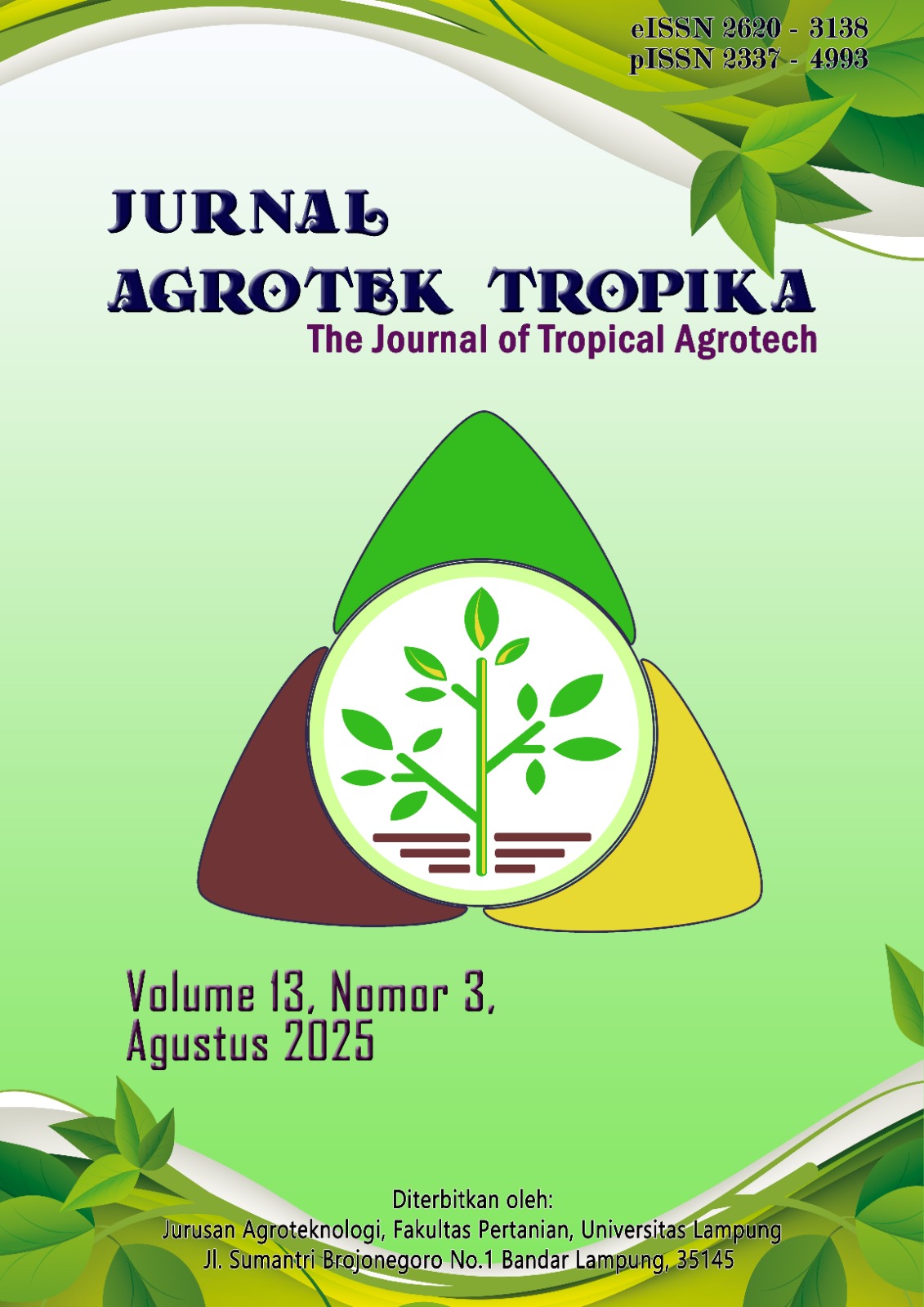VIABILITY RESPONSE OF SOYBEAN SEEDS (Glycine max [L.] Merril) VARIETY DETAP-1 TO THE PROPORTION OF QUICKLIME DURING NINETEEN MONTHS OF STORAGE
DOI:
https://doi.org/10.23960/jat.v13i3.11475 Abstract View: 0
Abstract View: 0
Abstract
Soybean seed storage using quicklime aims to maintain the quality of soybean seeds during a long storage period until the soybean seeds are ready to plant. This study aims to determine the optimal proportion of lime in maintaining the highest seed viability after being stored for nineteen months. This study was conducted from May to November 2023 at the Seed and Plant Breeding Laboratory, Faculty of Agriculture, University of Lampung. This study used a single factor, namely the proportion of quicklime. The proportion of lime weight used in this study was 0.0% (P0); 7.5% (P1); 15.0% (P2); 22.5% (P3); and 30.0% (P4) per 100g of seeds with a storage container volume of three liter volume. This study was arranged in a randomized block design (RAK) with five treatments and five replications to obtain 25 experimental units. The homogeneity test of variance was carried out using the Barlett test and the additivity of the data was tested using the Tukey test. The assumption of the analysis of variance was met, the separation of the mean value of the treatment used a polynomial comparison at the α level of 5%. The results of the study revealed that the addition of the proportion of quicklime increased the germination rate, strong normal sprouts, hypocotyl length, normal dry weight of sprouts, and decreased seed water content linearly, but the increase in germination power decreased with increasing proportion of lime. Seed viability after 17 and 19 months showed a relatively low seed germination power, which was 77.80% per 30 g of lime.
Downloads
Downloads
Published
How to Cite
Issue
Section
License
Copyright (c) 2025 Rovia Sanori Simamora Simamora, Ermawati Ermawati, Niar Nurmauli, Suskandini Ratih D, Adawiah

This work is licensed under a Creative Commons Attribution 4.0 International License.
Jurnal Agrotek Tropika (JAT) is licensed under a Creative Commons Attribution 4.0 International License.
The copyright holder is the author. Authors publishing under any license allowed by the journal retain the copyright and full publishing rights without restrictions.
The Creative Commons Attribution 4.0 International (CC BY 4.0) license allows users to copy, distribute, and adapt the work, even for commercial purposes, as long as proper attribution is given to the original creator. This is a highly flexible license that encourages widespread dissemination and use of creative works, supporting innovation and collaboration across various fields.











